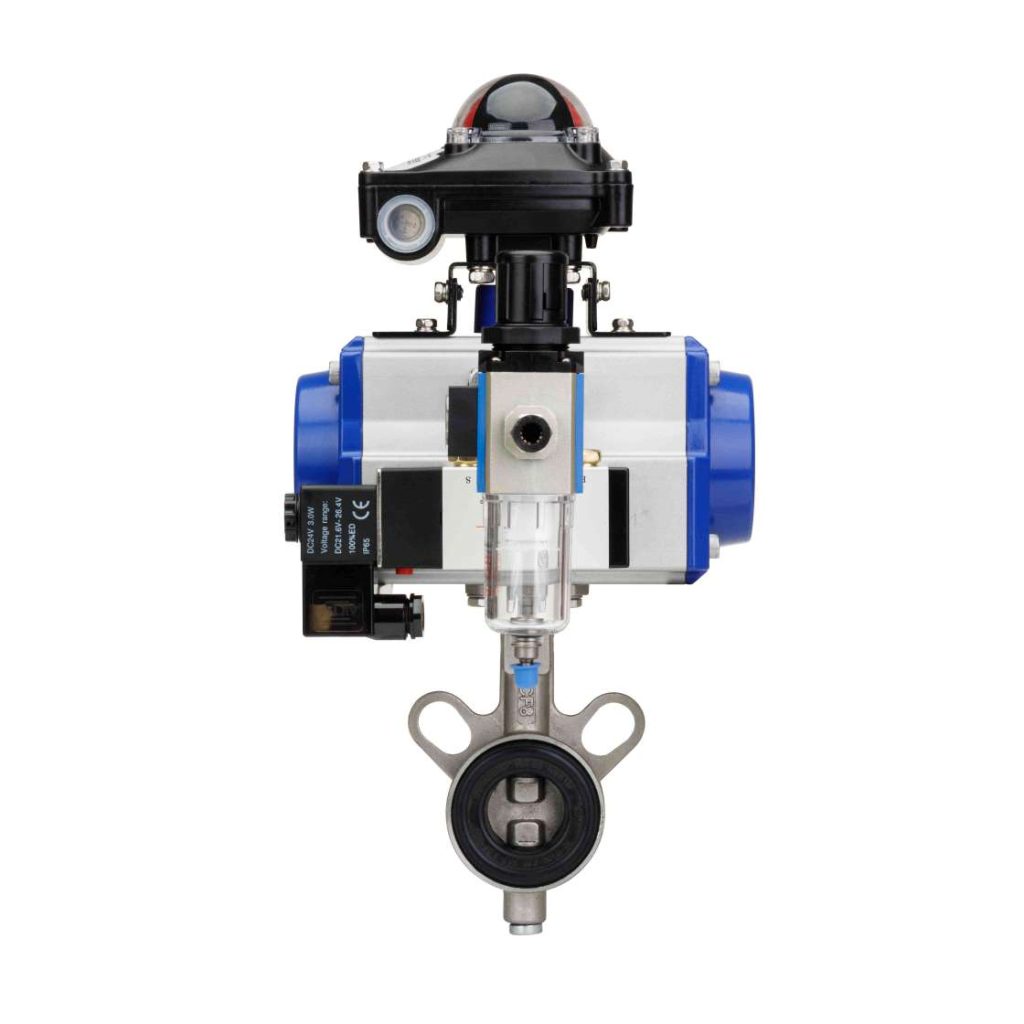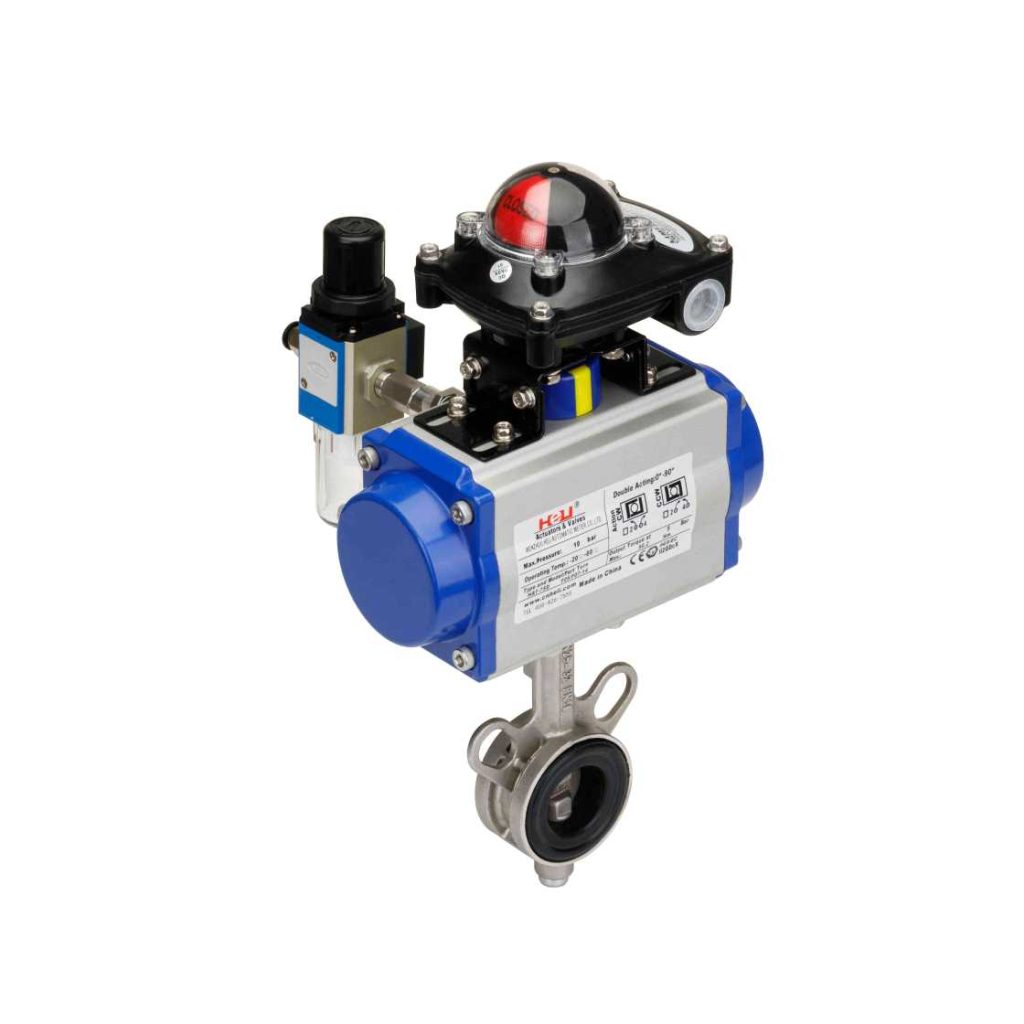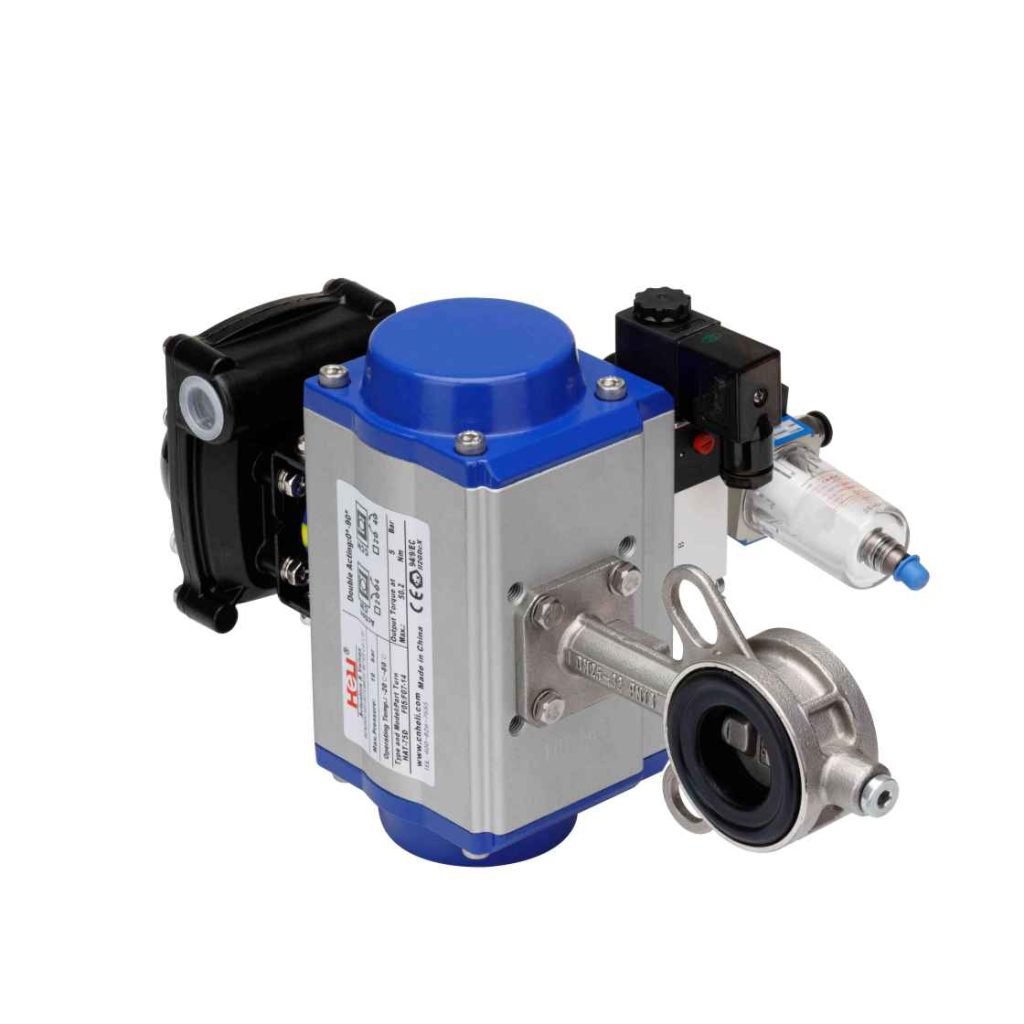Pneumatic butterfly valves are essential components in various industrial applications, designed to regulate the flow of liquids and gases. Known for their simple operation and efficient design, these valves utilize pneumatic pressure to control the position of a disc, which either obstructs or allows the passage of fluids. This article explores the construction, operation, benefits, applications, and maintenance of pneumatic butterfly valves, providing a detailed overview of their significance in fluid control systems.

Construction of Pneumatic Butterfly Valves

A pneumatic butterfly valve consists of several key components: the valve body, disc, seat, actuator, and control system. The valve body is typically made from materials like stainless steel, cast iron, or plastic, which ensure durability and resistance to corrosion. The disc is a circular plate that rotates on a vertical axis to open or close the flow path. It is designed to create minimal obstruction, making it an efficient flow control device. The seat is the lining inside the valve body that provides a seal when the disc is in the closed position, preventing leakage. The actuator, which is often a double-acting or spring-return pneumatic cylinder, controls the opening and closing of the valve. Finally, the control system, which can include sensors and a central controller, allows for remote operation and automation of the valve’s function.

Leave a Reply